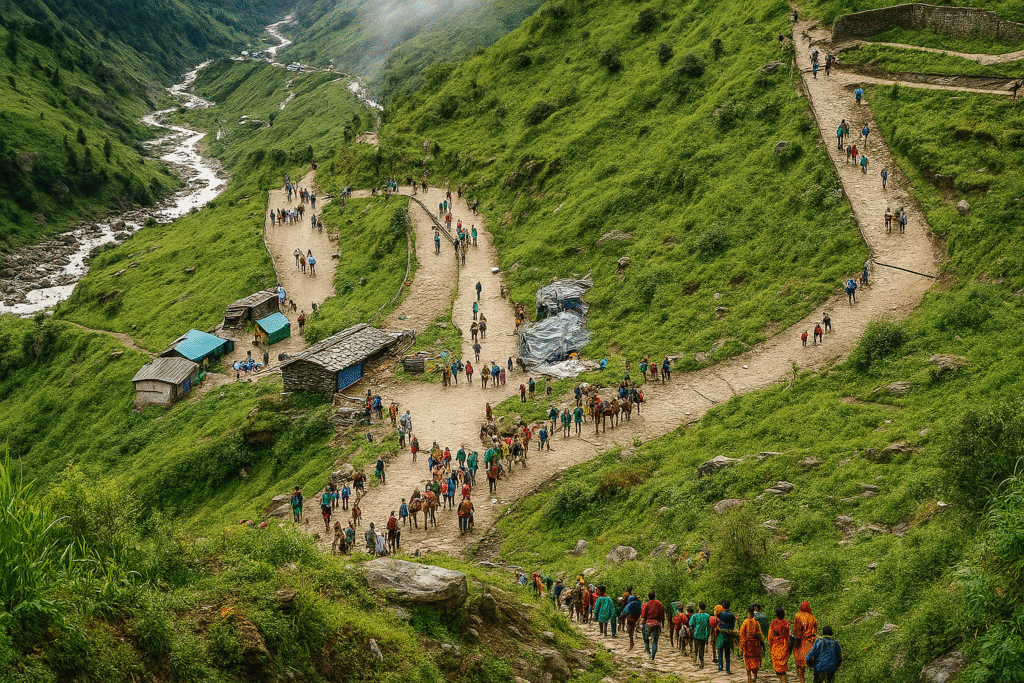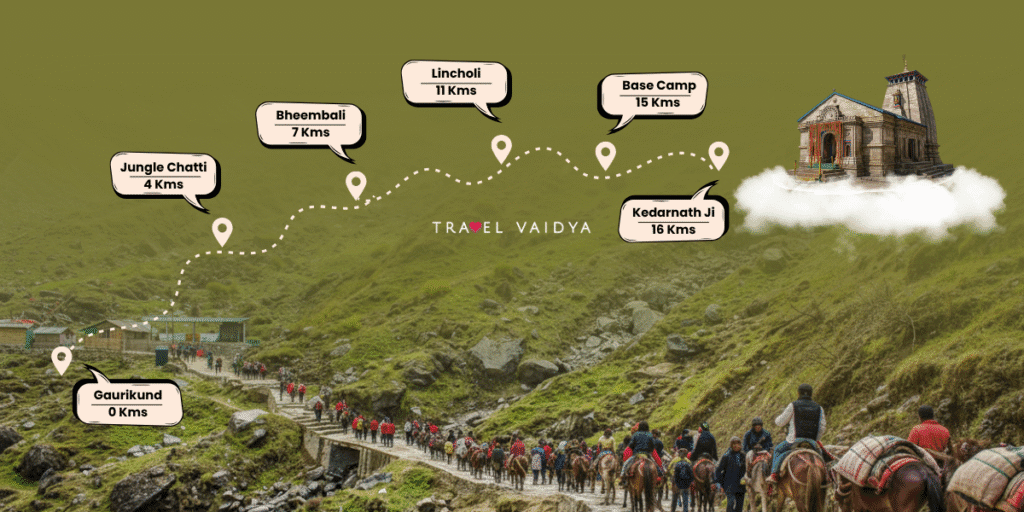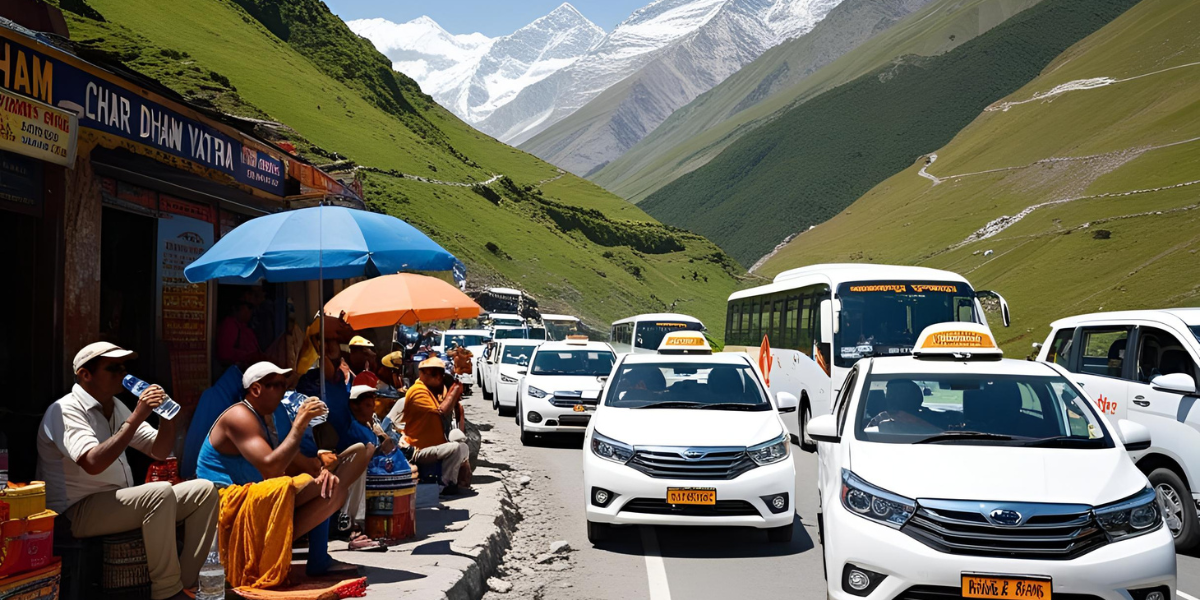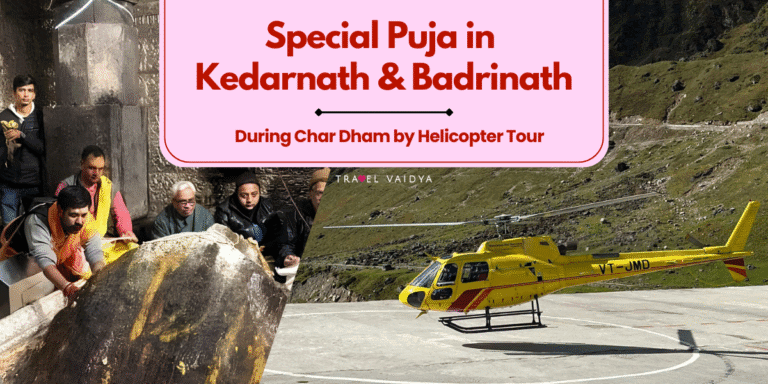Planning your first Kedarnath trek? Don’t ignore these common mistakes that many first-time travelers make. From starting late to skipping acclimatization, even small errors can lead to major issues at high altitude. This guide highlights real challenges faced by families, kids, and seniors so you’re fully prepared for a safe and successful Kedarnath yatra.
Table of Contents

Kedarnath Trek – Not Just a Spiritual Walk, Tough Walk
The Kedarnath trek may feel like a pilgrimage, but it’s a real high-altitude mountain climb. First-time travelers often underestimate it. This is not a picnic route—it’s 16 km of uphill walking, with slippery paths, mule traffic, sudden rain, and thin air. If you’re traveling with children or elders, don’t take it lightly.
- Trek distance: 16 km one way
- Altitude: Gaurikund (6,500 ft) to Kedarnath Temple (11,755 ft)
- Duration: 6 to 12 hours depending on fitness
- Route: Steep inclines, stone steps, narrow sections
Mistake #1: Starting Kedarnath Trek Too Late in the Day
Most first-timers start their Kedarnath trek after 8–9 AM, thinking they’ll have enough time. That’s risky. The temple closes by 3 PM, and fog or rain hits after noon, reducing visibility. Mules and Palki bookings also stop early. To reach safely, start your trek between 4:30–5:30 AM from Gaurikund.
- Fog sets in after 12 PM; visibility drops
- Temple doors close by 3 PM
- No mules or Palkis available after morning hours
✔ Ideal Start Time: 4:30 AM to 5:30 AM
Mistake #2: Ignoring the Altitude and Cold
Kedarnath sits at 11,755 ft, and the rapid gain from Gaurikund often causes altitude sickness—especially in kids and elders. Breathlessness, nausea, and fatigue are common beyond Linchauli. First-timers must not rush the climb. Rest every 2–3 km and hydrate. Spend at least one night at Sonprayag or Guptkashi to acclimatize.
- Senior citizens, kids under 10, and heart patients face highest risk
- Symptoms: Nausea, dizziness, headache, fatigue
- Don’t rush the climb—walk slowly and hydrate
✔ Solution: Spend 1 night at Sonprayag or Guptkashi before trek
Mistake #3: Underestimating Kedarnath Trek Distance
It may sound doable, but 16 km of continuous uphill trekking at high altitude is exhausting. First-timers often feel like it’s 20+ km due to steep inclines and low oxygen. The trek takes 6–12 hours depending on fitness. Break the route into zones and don’t walk nonstop.
- You’ll gain over 10,000 ft in 6–12 hours
- Slippery patches, steps, and mule waste slow you down
- Kids get tired after 7–8 km
✔ Plan breaks every 2–3 km at Jungle Chatti, Bheembali, Linchauli
Mistake #4: Not Booking Palki, Mule, or Helicopter Early
Mules, palkis, and helicopter seats are limited. On-spot bookings are difficult during season time. If you’re planning with seniors or kids, pre-book services at Sonprayag or via IRCTC for helicopters. Avoid assuming availability at the last moment, especially during peak season (May–June, weekends, or holidays).
- Mules and porters are limited
- Helicopter tickets sell out months in advance
- No priority queue even for senior citizens
✔ Pre-book via IRCTC for helicopter; local mule services via counter at Sonprayag
Mistake #5: Wearing Wrong Shoes or Slippers
Footwear makes or breaks your trek. Avoid sports shoes or sandals. The path is steep, slippery, and filled with mule waste. Use ankle-support trekking shoes with strong grip. Wet, cold feet can trigger fatigue and falls. Carry a second dry pair in your bag if possible.
- Avoid canvas or foam-soled shoes
- No grip = high risk on steep or wet paths
- Snow near the top in May makes it slippery
✔ Wear ankle-high trekking shoes with strong grip (Woodland, Quechua, etc.)
Mistake #6: Not Carrying Rain Protection During Kedarnath Trek
Kedarnath weather is unpredictable. Rain can hit any moment. Umbrellas won’t help on steep, windy trails. Carry a rain poncho or waterproof jacket—lightweight and easy to wear while walking. Keep your phone and essential documents in waterproof pouches to avoid damage during sudden showers.
- Rain + cold = risk of hypothermia
- Wet clothes + high altitude = AMS trigger
- Umbrellas are useless in wind
✔ Always carry a poncho or waterproof jacket
Mistake #7: Carrying Too Much or Too Little
Carrying heavy backpacks slows you down. But under-packing leaves you vulnerable. Bring just the essentials—a small backpack (20–30L), water, dry snacks, 1 spare outfit, medical kit, ID, ₹1,000 cash. Avoid large jackets, multiple shoes, full-size toiletries, and non-essentials like laptops or extra electronics.
Don’t Carry:
- Extra shoes, heavy jackets, full-size toiletries
- Big cameras, thick jeans, unnecessary electronics
Must Carry:
- Small backpack (20L–30L max)
- Water bottle, energy bars, 1 dry clothing set
- Medical kit, ID card, ₹1,000 in cash
Mistake #8: Not Doing Kedarnath Trek Registration
You can’t enter beyond Sonprayag without UTDB registration. Kedarnath registration is mandatory for all travelers. Many reach Gaurikund without it and are turned back. Register online or at the counter and keep a printout or digital copy. Commercial vehicles also require a trip card linked to passenger IDs.
- Available online (UTDB website/app) or offline at Sonprayag
- Also required for commercial vehicles (trip card with passenger list)
- Trip card must be visible during entire yatra
✔ Register online at least 1 week in advance
Mistake #9: No Acclimatization or Physical Prepration
Many first-timers land from Delhi and start the trek next morning. That’s risky. Your body needs time to adjust to altitude. Walk 3–5 km daily for 2 weeks before the trip. Practice stairs. Spend a night in Sonprayag/Guptkashi to avoid breathing issues or fatigue during the trek.
- Guptkashi/Sonprayag night halt helps acclimatize
- Walking 5 km/day for 2 weeks before trip is helpful
- Practice stair climbing for better leg strength
✔ Add one buffer day before your trek to adjust
Mistake #10: Forgetting Medicines and Essentials
Once on the trail, there are limited health facilities. Always carry basic medicines: ORS, Crocin, Diamox (if prescribed), pain spray, band-aids, lip balm, sunscreen, and a power bank. Keep items in waterproof pouches. First-timers often regret not carrying simple things like glucose, wipes, or toilet paper.
Must Carry:
- ORS, Diamox (only if advised), Crocin, pain relief spray
- Band-aids, Dettol wipes, hand sanitizer
- Sunscreen, lip balm, moisturizer
- ID card, power bank, extra batteries
✔ Keep medicines easily accessible

Kedarnath Trek Distance
Kedarnath trek distance is 16 km one way from Gaurikund to the temple. Major halts are Jungle Chatti (4 km), Bheembali (7 km), Linchauli (11 km), Base Camp (14.5 km), and finally Kedarnath. Tea stalls and food shops are available at Jungle Chatti, Bheembali, and Linchauli. Bheembali and Linchauli are best for long halts with medical tents and resting shelters. No mobile network mid-way—only Airtel & Jio works near the temple. Helipad to temple is a 700-meter uphill walk.
Kedarnath Trek Route
Kedarnath trek route goes straight from Gaurikund to the temple, covering 16 km. It passes through Jungle Chatti, Bheembali, Linchauli, and Base Camp before you reach the final stretch. The path is fully paved but gets steeper after halfway. You’ll see ponies, palkis, and lots of fellow yatris along the way. It’s safe but tiring—weather changes quickly, so best to start early in the morning.

- Gaurikund to Jungle Chatti – 4 km | Gentle start, mostly gradual
- Jungle Chatti to Bheembali – 3 km | Gets steeper, good tea stalls here
- Bheembali to Linchauli – 4 km | Tiring stretch, oxygen thinner here
- Linchauli to Kedarnath Base Camp – 3 km | Cold winds, last push
- Base Camp to Temple – 1.5 km | Stone path, final uphill walk
| Segment | Distance | Altitude Gain |
|---|---|---|
| Gaurikund to Jungle Chatti | 4 km | Moderate |
| Jungle Chatti to Bheembali | 3 km | Steep |
| Bheembali to Linchauli | 4 km | High elevation zone |
| Linchauli to Kedarnath Base Camp | 3 km | Windy and uphill |
| Base Camp to Kedarnath Temple | 1.5 km | Final short climb |
Kedarnath Trek Time
Kedarnath trek time usually takes anywhere between 6 to 10 hours one way from Gaurikund to Kedarnath Temple. For fit youngsters, it can be done in around 6 hours, but for families, senior citizens, or those taking frequent breaks, it easily stretches to 8–10 hours. The first half till Bheembali is gradual, but after that, the climb becomes steeper—especially near Linchauli and Base Camp.
Trek timing depends on:
- Fitness level and age group
- Number of halts for rest or food
- Weather conditions on the day
- Whether you’re walking, using pony, or palki
Most pilgrims start early between 4–6 AM to avoid rain and reach before dark. Keep in mind that post-2 PM weather can turn cold or foggy, so avoid late starts. If using palki or mule, the duration may be similar but slightly faster.
Also, the return trek usually takes lesser time but can be harder on the knees—especially for older travelers.
Kedarnath Helipad to Temple Distance
Kedarnath Helipad to Temple Distance is around 500 to 700 meters. It’s a short but steep uphill walk from the helipad to the temple gate and usually takes about 10 to 15 minutes on foot. The path is paved and well-maintained, but senior citizens or those with knee issues can hire a palki or porter right at the helipad exit. The temple is not visible immediately from the helipad, but it’s a straight route with resting benches along the way.

Kedarnath Trek Condition
Kedarnath trek condition is mostly walkable but gets tough in stretches. The 16 km trail from Gaurikund to the temple is fully cemented and wide enough for ponies and palkis, but it’s not an easy climb—especially after Bheembali. The early part of the trek is gradual, but the incline increases as you approach Linchauli and Base Camp.
What to Expect:
- Trail Surface: Cemented and stone-paved, but uneven and slippery during rain
- Weather Impact: Clear in the morning, often foggy or rainy post noon—carry a raincoat and warm layers
- Wind Zones: Cold winds near Linchauli; can feel harsh even in May–June
- Cleanliness: Shared with ponies—some stretches may be muddy and unhygienic
- Rest Stops: Available every few kilometers, but proper shelters are limited
The Kedarnath trek condition also depends on the month. May and June are peak season but crowded; monsoon months (July–August) are risky due to landslides; post-monsoon (September–October) offers better visibility but cold mornings. Trek early, move slow, and take breaks as needed—especially if you’re with elders or first-timers.
Planning Kedarnath Trek for Families and Senior Citizens
If you’re planning the Kedarnath trek with elders or children, it’s important to understand the terrain, altitude, and available support. The 16 km walk from Gaurikund is steep and takes 6–10 hours depending on pace. For senior citizens or those with health concerns, alternative options like pony, palki (doli), or helicopter are available from the base.
Here’s what to keep in mind:
- Start early: Begin the trek by 4:30–5:00 AM to avoid heat, crowd, and delays
- Fitness first: Mild walking practice and breathing exercises help before the trip
- Avoid overpacking: Carry only essentials like water, light snacks, medicine, rain cover
- Stay overnight: It’s better to halt at Kedarnath for a night before returning
- Medical concerns: Get a health check-up before travel; oxygen levels drop above 10,000 ft
- Emergency options: Heli and doli bookings can be done on the spot (subject to availability)
- Best time: May–June or mid-September to early October — avoid monsoons
Frequently Asked Questions
What’s the Kedarnath trek distance?
The total walking distance from Gaurikund to Kedarnath Temple is 16 km one way. It’s a proper uphill trek with a continuous gradient. Most people take 6 to 10 hours depending on stamina, age, and stops. For round trip, it’s 32 km unless you return by pony or helicopter.
Start point: Gaurikund
End point: Kedarnath Temple
Distance one way: 16 km
Round trip: 32 km
Time to complete: 6–10 hours
What is the Kedarnath trek route like?
The Kedarnath trek route is a steep, uphill walk covering 16 km from Gaurikund to the temple. The trail is cemented in most parts, with guardrails, rest points, food stalls, and basic shelters. It gets progressively tougher after Bheembali and especially beyond Linchauli due to thinner air and incline.
Surface: Mostly concrete path
Gradient: Gradual till halfway, then steeper
Facilities: Water, tea stalls, resting sheds, toilets
Best tip: Walk slow, rest often, carry light
Which stops come along the Kedarnath trek route?
The trek starts at Gaurikund and passes through multiple checkpoints and rest zones before reaching the temple. Major stops include Jungle Chatti, Bheembali, Linchauli, Kedarnath Base Camp, and finally the temple. These points have shelter, snacks, and medical support.
Gaurikund (starting point)
Jungle Chatti – 4 km mark
Bheembali – 6 km
Linchauli – 11 km
Base Camp – 14 km
Kedarnath Temple – 16 km
Where is the Kedarnath trek start point?
The trek starts from Gaurikund, the last point for vehicles. It’s where the registration counters, pony services, and accommodations are located. You need to reach here by early morning to begin the climb on time. Gaurikund also has hot springs and basic facilities.
District: Rudraprayag, Uttarakhand
Altitude: Around 6,500 feet
Facilities: Trek permits, pony, palki, cloakroom
Reach by: Road till Gaurikund from Sonprayag
When is the best time for Kedarnath trek?
Try to go in May–mid June or September–October. These are safe and scenic months with clear skies. Avoid July and August — it rains heavily and landslides are frequent. Post-monsoon season is best if you want less crowd and better photos.
Best months: May, June, Sept, Oct
Avoid: July & August (monsoon)
Temple closes: After Diwali
Weather: Cool to cold, chances of snow in early May
Is Kedarnath trek difficult?
It’s not a casual walk. The trail is demanding, especially for elders or people with breathing problems. You gain a lot of height in a single day. Carry essentials, wear proper shoes, and pace yourself. If walking seems hard, you can go by pony or helicopter.
Grade: Moderate to tough
Steep zones: After Linchauli, last 4 km
Advice: Walk slow, hydrate, don’t carry heavy bags
Options: Ponies, palkis, heli ride
What’s the Kedarnath trek height?
The temple stands at 3,583 meters or around 11,755 feet above sea level. That’s a steep gain from Gaurikund (about 1,982 m). Oxygen levels drop after 10,000 feet, so it’s normal to feel short of breath. No need to panic — just move slowly and rest often.
Temple altitude: 3,583 m (11,755 ft)
Start point (Gaurikund): 1,982 m
Elevation gain: 1,600+ meters
Tip: Start early, avoid sudden exertion
Where can I see Kedarnath trek photos?
We update trail photos every season on our website and Instagram. You’ll see actual shots of the route, snow areas, food huts, rest shelters, and temple views. Most guides and travel blogs post recent photos to help new trekkers visualize the journey.
Find on: Travel Vaidya blog, YouTube, Instagram
Includes: Trail markers, base camp, temple path
Real-time pics: Ask our team via WhatsApp
Use: Helps in planning & gear prep
How many km is Kedarnath trek?
The trek is 16 km one way, and 32 km round trip if walking both sides. You’ll cover this distance from Gaurikund to Kedarnath Temple. You can return by pony or book a heli drop if tired — many people do one-way trek and return by other means.
Time: 6–10 hours up, 4–6 hours down
Distance (one side): 16 km
Return journey: 32 km total
Other options: Helicopter, palki, pony
About Travel Vaidya – Trusted Travel Experts of Uttarakhand
Travel Vaidya is a Dehradun-based travel company with deep roots across Uttarakhand. For over 9 years, we’ve helped families, senior citizens, and spiritual travelers explore places like Char Dham, Auli, Jim Corbett, Nainital, Kausani, Almora, and Ranikhet with confidence.
We’re not a call center or big-brand OTA—we’re a small team that builds practical, experience-based itineraries. Every plan is shaped by local knowledge, seasonal awareness, and what actually works on-ground.
From temple visits to hotel check-ins, we handle logistics, route planning, and day-wise support—especially for elders and family travelers. We share what we know from living here, not from reading about it.
This guide is part of our effort to make travel in Uttarakhand easier to understand and plan.







